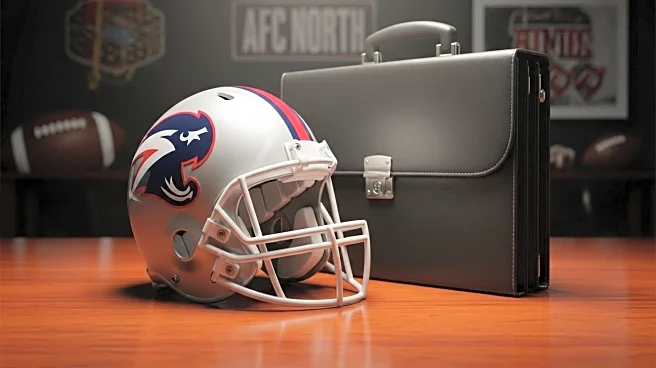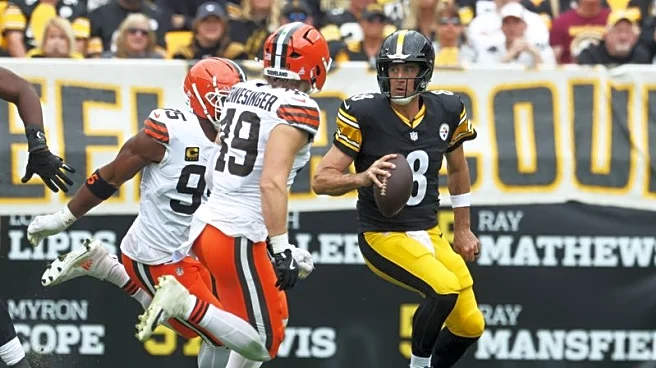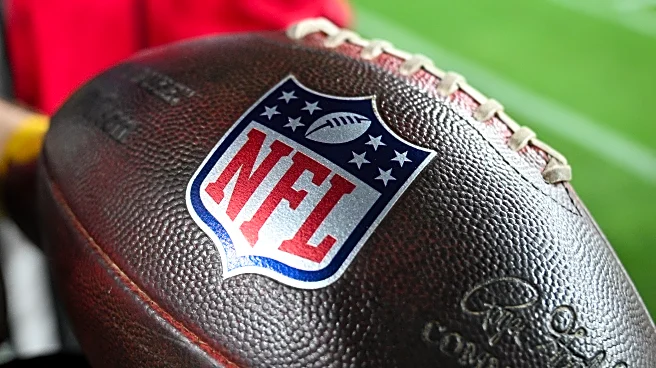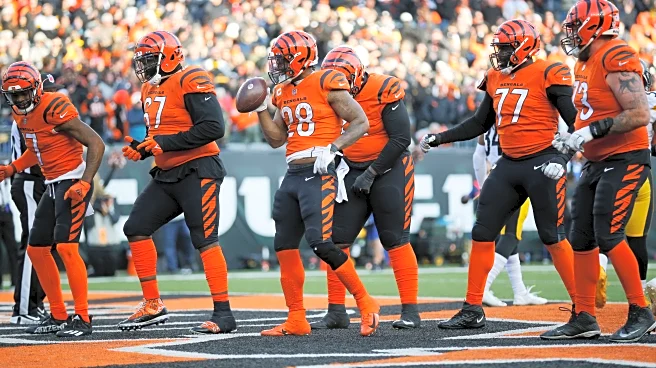What's Happening?
During the Pittsburgh Steelers' recent game against the Cincinnati Bengals, a miscommunication occurred over a flea flicker play. In the first quarter, quarterback Aaron Rodgers handed the ball to running back Jaylen Warren, who then pitched it back to Rodgers.
However, with no open receivers, Rodgers threw the ball away and expressed frustration towards Warren. Post-game, Rodgers stated that the play was not intended to be a flea flicker, indicating a lack of alignment within the team's offense. Contrarily, Steelers coach Mike Tomlin confirmed that a flea flicker was indeed the play call. This discrepancy highlights a communication breakdown between the play call relayed to Rodgers and the execution on the field.
Why It's Important?
The disagreement between Aaron Rodgers and Mike Tomlin over the play call underscores potential issues within the Steelers' offensive communication. Such misalignments can affect team performance, especially in high-stakes games. For the Steelers, who are currently leading the AFC North, maintaining clear communication is crucial to sustaining their competitive edge. Miscommunications like this can lead to missed opportunities and could impact the team's overall strategy and execution in future games. The incident also raises questions about the internal dynamics and decision-making processes within the team, which could have broader implications for their season performance.
What's Next?
The Steelers will need to address the communication issues highlighted by this incident to prevent similar occurrences in future games. This may involve reviewing their play-calling procedures and ensuring that all team members are aligned on the field. The team's response to this situation will be critical in maintaining their position in the AFC North and could influence their approach in upcoming matches. Stakeholders, including fans and analysts, will be watching closely to see how the team resolves these internal challenges and whether they can maintain their current standing.















